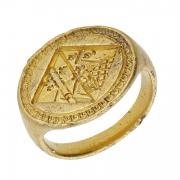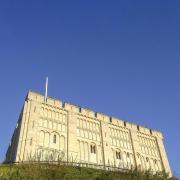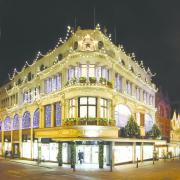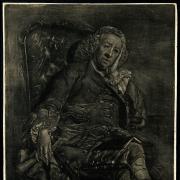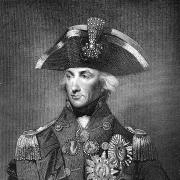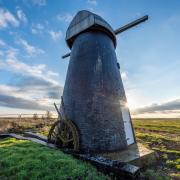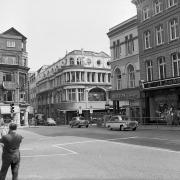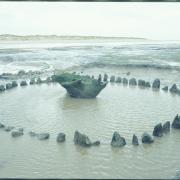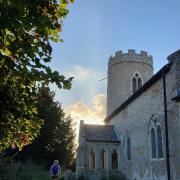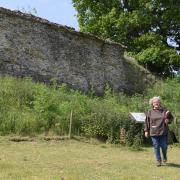Two Norfolk diving brothers have revealed their astounding discovery to the world after keeping it secret for 15 years – an historic shipwreck off Great Yarmouth which almost changed the course of history.
The Gloucester sank 340 years ago with the future King of England, James Stuart, aboard when it ran onto a sandbank in the treacherous waters off the east Norfolk coast. He was saved but up to 200 others perished in the tragedy.
Since the disaster on May 6, 1682, the wreck has lain undisturbed on the seabed, its precise whereabouts a mystery – until two brothers and a friend discovered it after a four-year hunt. It has been called the most significant shipwreck find off Britain's coast since the Mary Rose was found.

Julian and Lincoln Barnwell and James Little have had to keep their discovery, made in 2007, a secret until now. Lincoln Barnwell explained how they began their quest.
"We had an index full of every shipwreck around the UK. I was flicking through one night and the dates were getting older and older till I came to the Gloucester in 1682. I picked the phone up to my brother and that was it.”
He described the moment they found their target. “It was our fourth dive season looking for Gloucester,” he said. “We were starting to believe that we were not going to find her, we’d dived so much and just found sand. On my descent to the seabed the first thing I spotted were large cannon laying on white sand, it was awe- inspiring and really beautiful.

“It instantly felt like a privilege to be there, it was so exciting. We were the only people in the world at that moment in time who knew where the wreck lay. That was special and I’ll never forget it. Our next job was to identify the site as the Gloucester.”
Julian added: “When we decided to search for the Gloucester, we had no idea how significant she was in history. We had read that the Duke of York was onboard but that was it. We were confident it was the Gloucester, but there are other wreck sites out there with cannons, so it still needed to be confirmed.
“There is still a huge amount of knowledge to be gained from the wreck, which will benefit Norfolk and the nation. We hope this discovery and the stories that are uncovered will inform and inspire future generations.”

They have made over 200 dives to the wreck and come to the surface with some extraordinary finds. As well as the cannon the divers have retrieve artefacts including clothes and shoes, navigational and other professional naval equipment, personal possessions, and many wine bottles.
One of the bottles bears a glass seal with the crest of the Legge family - ancestors of George Washington, the first US President. The crest was a forerunner to the Stars and Stripes flag. Uniquely, in addition there were also some unopened bottles, with wine still inside - offering exciting opportunities for future research.

The brothers, who run a print business in Aylsham, have spent hundreds of thousands on their quest. Following the discovery, they have completed an underwater archaeology course with the Nautical Archaeology Society.

The Gloucester
The Gloucester was commissioned in 1652, built at Limehouse in London, and launched in 1654. In 1682 it was selected to carry James Stuart, Duke of York, to Edinburgh to collect his heavily pregnant wife and their households. The aim was to bring them back to King Charles II’s court in London in time, it was hoped, for the birth of a legitimate male heir.

The ship had set sail from Portsmouth with the Duke and his entourage joining it off Margate, having travelled by yacht from London. At 5.30am on May 6, the Gloucester ran aground some 45km off Great Yarmouth following a dispute about navigating the treacherous Norfolk sandbanks. The Duke, a former Lord High Admiral, had argued with the pilot for control over the ship's course.
Within an hour the vessel sank with the loss of hundreds of the crew and passengers. The Duke barely survived, having delayed abandoning ship until the last minute.

As well as the Duke of York, the Gloucester carried a number of prominent English and Scottish courtiers including John Churchill, later the 1st Duke of Marlborough.
Diarist and naval administrator Samuel Pepys, who witnessed events from another ship in the fleet, wrote his own account - describing the harrowing experience for victims and survivors, with some picked up “half dead” from the water.

Keeping the secret
Finally going public meant sharing a story the brothers had known about for 15 years. "It is a relief being able to talk about it publicly," Lincoln said. “"I am not saying it has been a burden but it is always in the back of your mind. We see ourselves as the guardians of the wreck site."
Julian said: "It is a site that should be shared. We have only just scratched the surface of what it has to offer.

The brothers have dived wrecks and reefs all over the world and just love the underwater world and all the astonishing things that can be found there. "What is so fascinating," Julian said, "Is that a lot of shipwrecks have not been dived before and each one has a story.
"It is just an honour to be talking about it. And we want to do the wreck justice. "It's a diver's dream. Really special."
Exhibition
The discovery of The Gloucester is described by maritime history expert Prof Claire Jowitt, of the University of East Anglia as the most important maritime discovery since the Mary Rose.

The ship represents an important ‘almost’ moment in British political history: a royal shipwreck causing the very near-death of the Catholic heir to the Protestant throne at a time of great political and religious tension.
Prof Jowitt, a world-leading authority on maritime cultural history, is a co-curator of the exhibition. “Because of the circumstances of its sinking, this can be claimed as the single most significant historic maritime discovery since the raising of the Mary Rose in 1982,” she said. “The discovery promises to fundamentally change understanding of 17th-century social, maritime and political history.

“It is an outstanding example of underwater cultural heritage of national and international importance. A tragedy of considerable proportions in terms of loss of life, both privileged and ordinary, the full story of the Gloucester's last voyage and the impact of its aftermath needs re-telling, including its cultural and political importance, and legacy. We will also try to establish who else died and tell their stories, as the identities of a fraction of the victims are currently known.”
Now a major exhibition is planned for Spring 2023, the result of a partnership between the Barnwell brothers, Norfolk Museums Service, and academic partner UEA. Running from February to July at Norwich Castle Museum & Art Gallery, the exhibition will display finds from the wreck - including the bell that confirmed the ship’s identity - and share ongoing historical, scientific and archaeological research.
What now for the wreck?
Lord Dannatt, Norfolk Deputy Lieutenant and longstanding resident of the county, is lending his skills and support to the historic rescue project. As former head of the British Army, he works with charities and organisations that have links to the armed services.

“This is going to be Norfolk’s Mary Rose,” said Lord Dannatt. “Julian and Lincoln have touched history, history that could have changed the course of this nation. It’s such an amazing story to tell. Our aim is to bring that story to life and to share it with as many people as possible.”
There will be an historical research project, funded by the Leverhulme Trust and led by Prof Jowitt, which will explore not only the failures of command at sea before the Gloucester sank, but conspiracy theories about the tragedy's causes and its political consequences. It is also hoped that UEA’s scientific expertise and facilities will be used to analyse some of the finds from the wreck.

Because the ship was a Royal Navy vessel, The Ministry of Defence’s position is that all artefacts remain the property of the Ministry of Defence; however, where items are positively identified as personal property, ownership will then default to the Crown.
Partners already involved in the landmark project alongside the Barnwells, UEA and Norfolk Museums Service include the Ministry of Defence, the National Museum of the Royal Navy in Portsmouth, York Archaeology, the Leverhulme Trust and Maritime Archaeology Trust. The exhibition is being generously supported by Alan Boswell Group and Birketts LLP.







